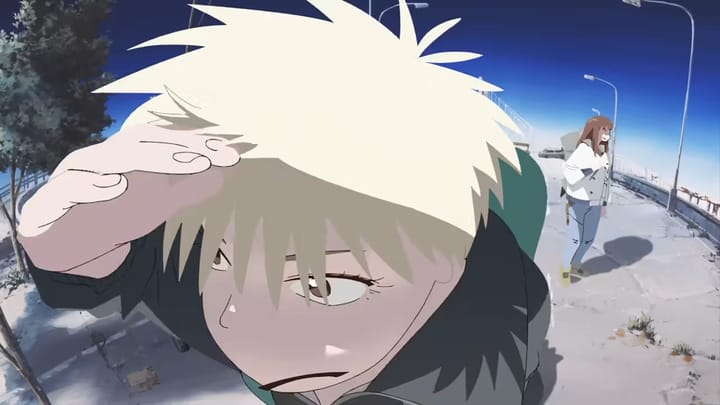How Do You Die? Coming to Grips With The Boy and the Heron
Let's discuss Hayao Miyazaki's newest and most confounding film, The Boy and the Heron.
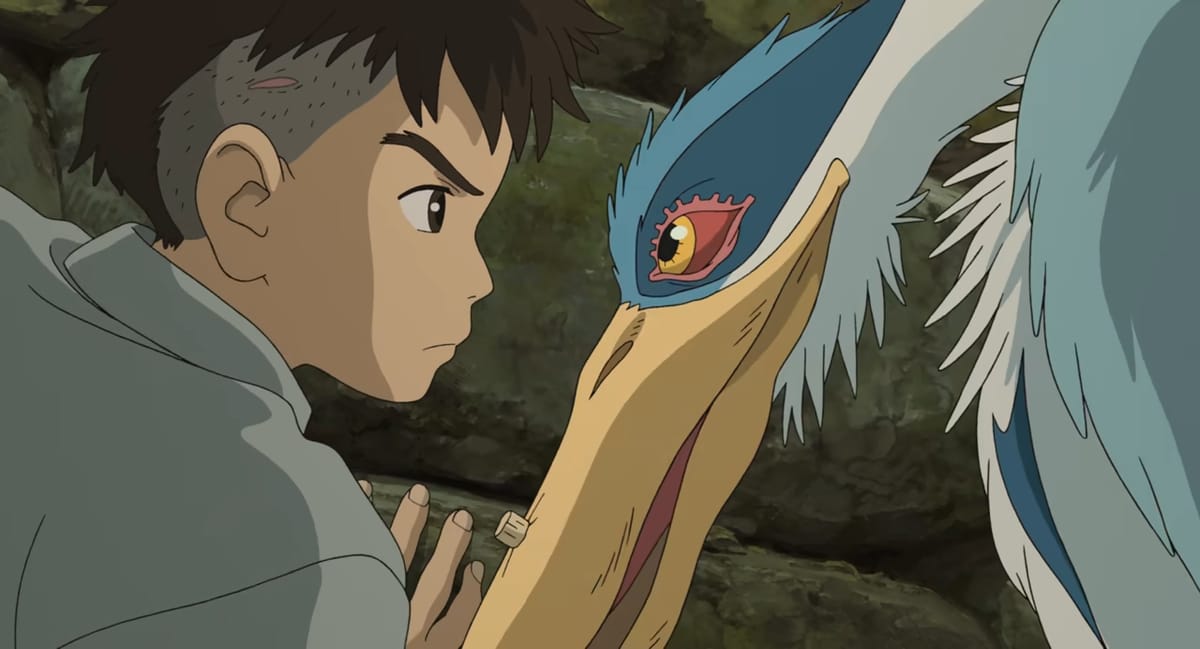
Welcome to ANIWIRE! This week we’re talking about The Boy and the Heron, the newest film by Hayao Miyazaki. Before that, though, here’s some news from the past week.
News
- The Boy and the Heron earned $12.8 million in its opening weekend, becoming the first original anime film to top the United States box office. Godzilla Minus One is doing even better.
- The opening credits sequence for the second season of Da Wang Rao Ming (Spare Me, Great Lord!) was released. Not quite as transcendent as the original, but a worthy effort.
- An English translation was released for Tengai Makyo: Far East of Eden, the very first RPG to be released on CD.
- A new trailer was released for Metallic Rouge, the upcoming series featuring director Motonobu Hori and mechanical designer/jack of all trades Yutaka Izubuchi.
- A new film, Fureru, was announced from the Super Peace Busters team: writer Mari Okada, director Tatsuyuki Nagai and character designer Masayoshi Tanaka. These are some of the best folks in the game at writing teen melodramas, so worth keeping an eye on this one.
Bookmarks
- For IndieWire, David Ehlrich went deep on the production of the dub for The Boy and the Heron. Did you know that Robert Pattinson voiced the heron?
- For SlashFilm, Devin Meenan put together an oral history of Cowboy Bebop’s famous dub.
- Ritesh Babu made a return to comics criticism in order to write about “the grift cycle.”
- Let’s hear it for the boy! For Aftermath, Chris Person wrote about the greatest anime of all time, Cipher.
- For Anime Herald, Brianna Corley wrote about why stories without endings haunt us so. That is all well and good, but I still want that second season of Stars Align thank you.
- For Comics Journal, Tegan O’Neil wrote about Osamu Tezuka’s One Hundred Tales.
- Amelie Doree reviewed Sex 2. Finally!
AMV of the Week
Here’s “Ghiblussy” by Illea.
The following piece features spoilers for The Boy and the Heron. That said, this is the kind of film where knowing what happens doesn’t make it any easier to understand. Feel free to read ahead, or watch the movie first if that’s important to you. I recommend listening to the soundtrack from the film as you read; that’s all I’ve been doing these days.
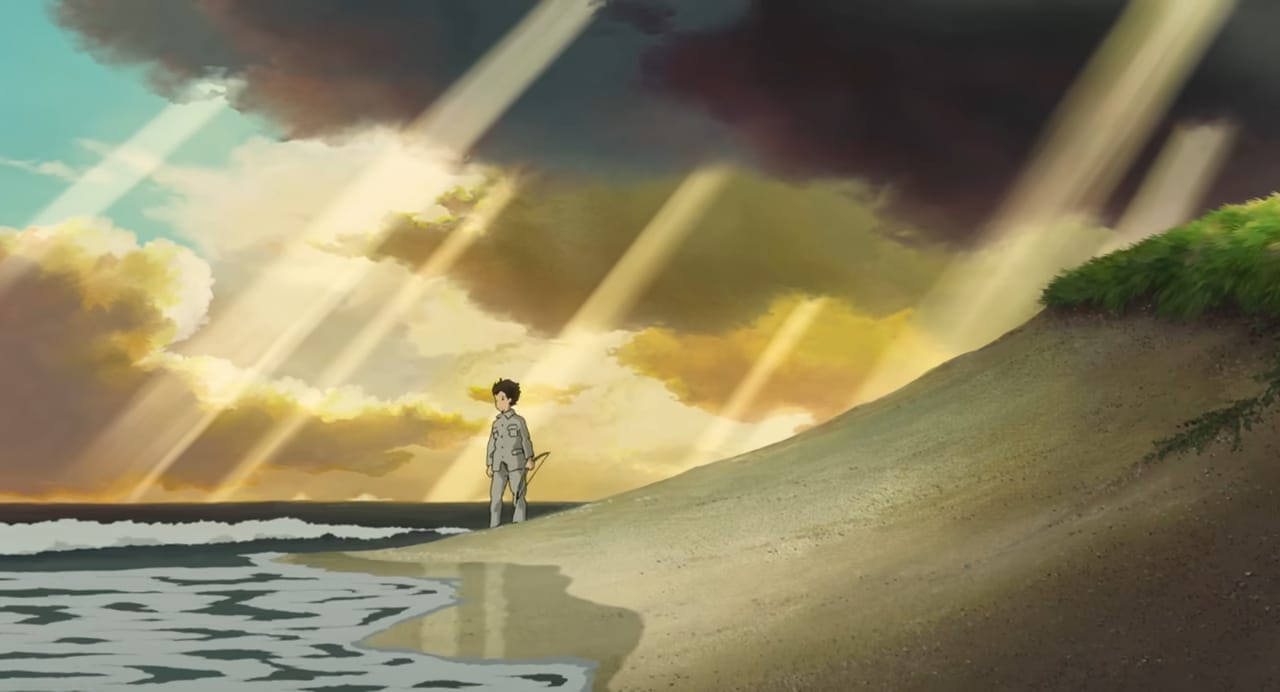
Hayao Miyazaki made his career building worlds of magic and adventure. The airships and floating ruins of Castle in the Sky. Spirited Away’s spectral bath house. Princess Mononoke’s forests, littered by dead gods and human corpses. Even his quieter settings, such as My Neighbor Totoro’s nostalgic countryside, hide mysteries in the corners.
These are worlds made out of tangible details: monsters, food, vehicles and even physics. They capture the imagination even when they are not especially pleasant places to live. Studio Ghibli was founded so that Miyazaki and his compatriot Isao Takahata might have the time and money they needed to make complex worlds like these. At its height, no other studio in Japan could compare.
The Boy and the Heron presents a new Ghibli world for mass consumption. One half of the film is set in the Japanese countryside following World War II. The other half takes place in a spirit world of clouds and rolling waves. These two halves are united by a crumbling tower ruled by an old man. The protagonist, a young boy named Mahito, enters this tower and travels from one world to the next. He seeks to retrieve his missing adopted mother Natsuko. But the one he truly wants is his birth mother, who died by fire during the war.
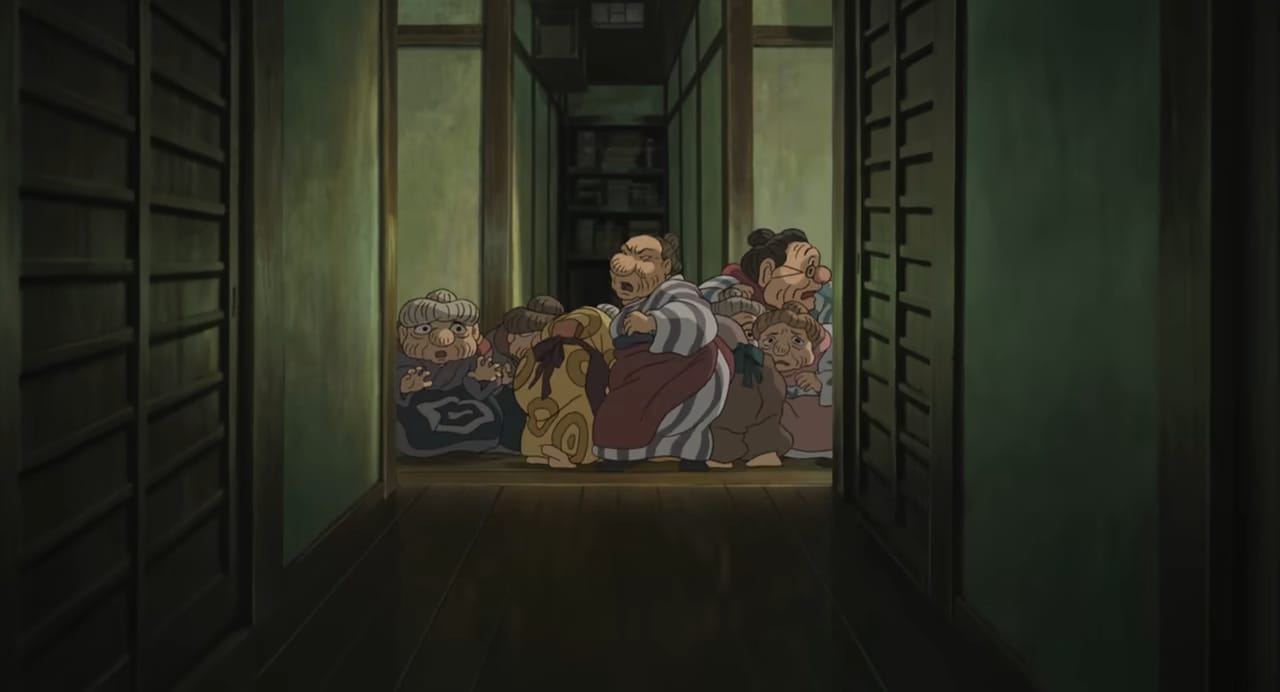
The premise is reminiscent of Spirited Away, an earlier Miyazaki film about a child learning self-reliance in the face of otherworldly forces. Yet that film depicted a huge and populated world in which every being had a name, a face and a story to tell. Its spirits are bowed but not defeated by the sins of humanity, such as capitalism and environmental devastation. They live and thrive even after Chihiro leaves the bathhouse for good at the end of the film.
The Boy and the Heron, by contrast, takes place in a dead world of water and stone. Its ghosts are faceless. Its lands are infested by stupid, fascist parakeets. Its ruler, Mahito’s grand-uncle, must rebuild a tower of blocks every day to avert disaster. This is a flawed, fickle world that crumbles at the slightest touch.
Who is responsible? A conversation between Mahito and a dying pelican provides us with a clue. Like the parakeets, the pelicans are stubborn and hungry. They break into holy tombs and devour the souls of the unborn. Yet as the dying pelican says, they came to the spirit world from Earth. They are used to earth fish, not the great fish that swim in the waters of the dead. Only the warawara, which float into the skies to be reborn as humans on earth, are fit for their bellies.

The pelicans eat because they are hungry, and because the life that drives them is incompatible with death. They are victims rather than perpetrators. It is the world’s design itself that is to blame. The arc of the star that opened a door on Earth to the land of the dead. The books that drove Mahito’s grand-uncle insane, so that he might walk through that door. The shape of the tower he builds every day, made of tainted stones.
The spirit world of The Boy and the Heron still drips with magic, of course. Yet that magic is founded on metaphor and fakery. An old woman might coexist with her younger self, at the same time as she remains a little figurine in Mahito’s pocket. Parakeets are hungry cannibals in the spirit world but are reduced to helpless lovebirds in the real world. Then there is the heron, the wily trickster that transforms from bird to man and back again. The heron terrifies Mahito earlier in the film, and yet an arrow fletched with his own feathers is all it takes to reduce him to nothing.
At the midpoint of The Boy and the Heron, the heron lures Mahito into the tower by promising that his dead mother is there. Lo and behold, Mahito finds a woman that looks just like his mother reclining on a sofa. When he touches her, though, her body melts into liquid and pools on the ground. This is the reality of magic. It is no surprise that Mahito’s uncle must rebuild the tower every single day. Illusions forget themselves.
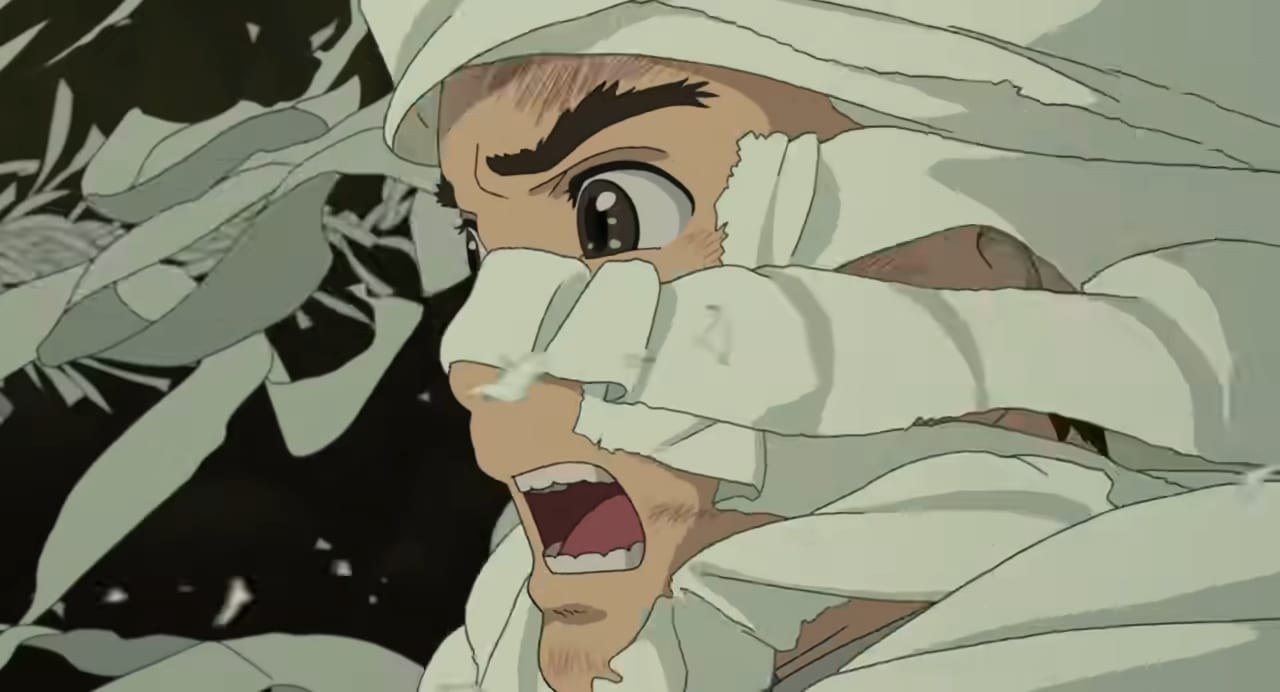
Or do they? Deep in its recesses, Mahito finds his foster mother Natsuko. He begs her to leave the spirit world and return home. Natsuko says in response that she despises him. The rage that distorts her face is nothing like what Mahito remembers. Could this be a fake Natsuko, or a Natsuko under the influence of the spirit world? Could it be the truth?
Natsuko’s expression looks entirely unlike any expression I’ve seen a woman make in a Miyazaki movie. That is because Miyazaki didn’t draw it. According to animator Toshiyuki Inoue, who spoke to Full Frontal about the film in October 2023, it was actually character designer and animation director Takeshi Honda that handled that scene. After all, as Inoue said, “Miyazaki isn’t very good at drawing adult women.” Inoue says. While Honda kept the majority of Miyazaki’s designs intact, he took charge on depicting Natsuko throughout the film.
Miyazaki is famous (or infamous) for redrawing the work of his collaborators while making a movie. Even the most skilled artists expect corrections on a Ghilbi movie. Yet according to Inoue, Miyazaki is now too tired to do everything by himself. When he had to step back, it was Honda who took his place to ensure everything went smoothly. This is part of what gives The Boy and the Heron such a distinct flavor within Miyazaki’s filmography; while its story is undeniably personal to him, the style of his fellow artists correspondingly bleeds through much more than usual.
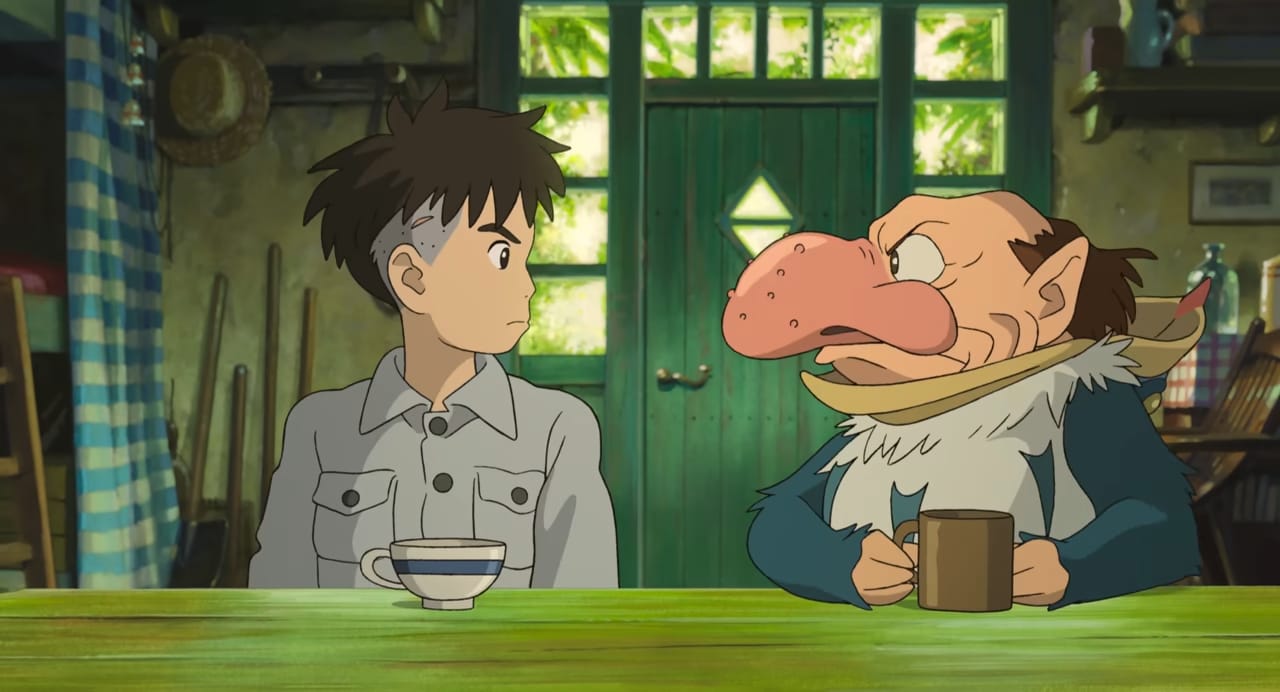
Natsuko’s anger in this scene reflects the contradiction at the heart of the film. It is a child’s nightmare, a confirmation of Mahito’s worst fears. It is also a realistic depiction of an adult woman’s frustration in a way that rejects Mahito's young perspective. Takeshi Honda’s style breaks through Miyazaki’s overpowering worldview. There is no difference between what is “real” and “fake.” After all, what is animation but a magician’s trick suggesting reality through the arrangement of pictures? Was there ever a real Natsuko, or even a real Mahito?
The Boy and the Heron is not a “balanced” film. I thought the scene between Mahito and Natsuko in the spirit world was incredible, but Inoue may be right to say in the interview that it overshadows the rest of the movie. There are a few “exposition scenes” with Mahito’s father in the second half that I thought were out of place. The film doesn’t so much end as slam the door in the viewer’s face. Despite its positive critical reception, I saw plenty of folks at my screening who were either confused by The Boy and the Heron or simply nonplussed by it.
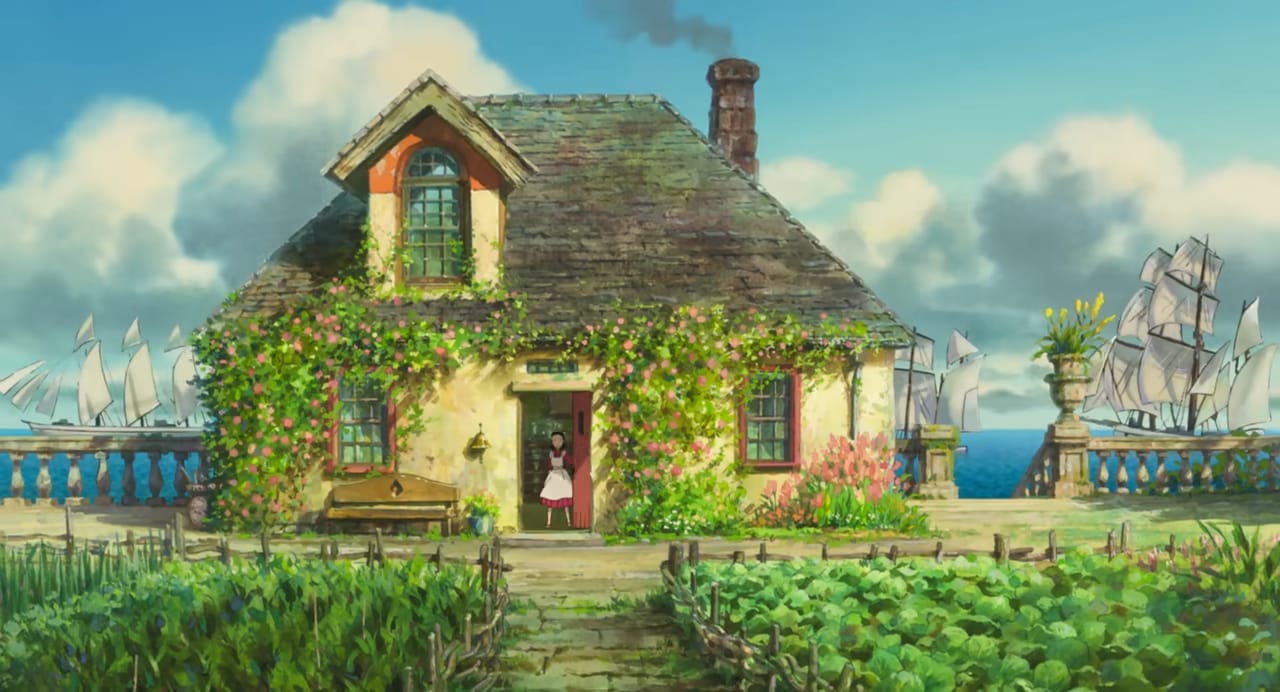
What kept the film together, for me, was Joe Hisashi’s score. When I had the chance to interview him for Crunchyroll News earlier this year, he spoke about his love of minimalist composers like Phillip Glass and Arvo Pärt. Hisashi is perfectly capable of big, exciting orchestration. Just listen to the bone-rattling horns of “The Dragon Boy” in Spirited Away, or the epic fantasy scoring of Princess Mononoke. The Boy and the Heron, though, is minimalism. Piano is the instrument of choice. A handful of leitmotifs circle each other like water circling the drain. There is no grand “drop” like “The Dragon Boy,” where the doors of fantasy are thrown wide open. Awe and dread are the order of the day, not beauty.
Hisashi understands that the cosmos of The Boy and the Heron is not mythology. It is psychology. The spirit world cannot offer answers because it is not real. Only Mahito, or his grand-uncle, or the human beings he meets along the way, know the answers, even if they are hesitant to admit them. They navigate the land of the dead as if it were an abandoned shopping mall stripped of goods. As if it were the remnants of Hayao Miyazaki’s career, his last film at a studio that as of now cannot exist without him.
Mahito is real. So is the self-inflicted scar that marks his forehead. His mother is dead, but by the blood that oozes from his act of self-harm he knows that he himself is alive. There is no future for his grand-uncle. No future for pelicans or for parakeets. There is only Hisashi’s score, his leitmotif “Ask Me Why.” The question: “how do you live?”

When I saw Spirited Away as a child, I did not realize that Disney changed the ending of the English dub so that Chihiro retains her experiences. In the original Japanese version, Chihiro forgets everything that happened to her in the land of the spirits. This does not happen in The Boy and the Heron. Mahito recalls his travels in the spirit world even if his friends do not. The heron comes to him and says, you must forget what happened to you. It is easier that way.
Whether or not Mahito forgets, he is changed. Like a fire in the night, or a tower that crumbles to the ground. The power of the spirit world is transformation not permanence. Flowing water rather than immutable stone. Death. Facing death, life. That’s The Boy and the Heron. Is it?
Further Reading
Autumn Wright interviewed Joe Hisashi over at Paste.
Matteo Watzky reviewed the film at Full Frontal.
Hoai-Tran Bui reviewed the film at Inverse.
Baxter reviewed the film at Tsundoku Diving.
For Sakuga Blog, Kevin Cirugeda wrote about Hayao Miyazaki and physics.
By the way, if you're looking for another (perhaps even better) Ghibli film about death, I recommend Isao Takahata's The Tale of the Princess Kaguya.
